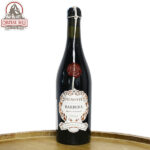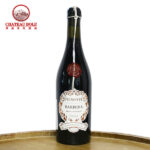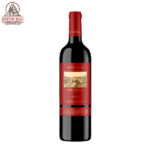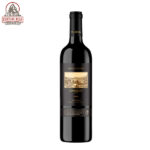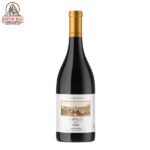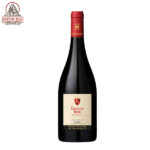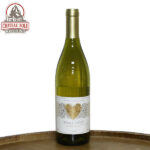Barbera Grape
Barbera is a red Italian wine grape variety that, as of 2000, was the third most-planted red grape variety in Italy (after Sangiovese and Montepulciano). It produces good yields and is known for deep colour, full body, low tannins and high levels of acid.
To learn more about this grape – read on. To find wines made with this grape, scroll down to the bottom.

Century-old vines still exist in many regional vineyards and allow for the production of long-ageing, robust red wines with intense fruit and enhanced tannic content.
The best known appellation is the DOCG (Denominazione di Origine Controllata e Garantita) Barbera d’Asti in the Piedmont region: the highest-quality Nizza DOCG wines are produced within a sub-zone of the Barbera d’Asti production area.
When young, the wines offer a very intense aroma of fresh red cherries and blackberries. In the lightest versions notes of cherries, raspberries and blueberries and with notes of blackberry and black cherries in wines made of more ripe grapes.
Many producers employ the use of toasted (seared over a fire) oak barrels, which provides for increased complexity, ageing potential, and hints of vanilla notes. The lightest versions are generally known for flavours and aromas of fresh fruit and dried fruits, and are not recommended for cellaring. Wines with better balance between acid and fruit, often with the addition of oak and having a high alcohol content are more capable of cellaring; these wines often result from reduced-yield viticultural methods.
Northwest Italy is the viticultural home for Barbera, but Italian immigrants spread it through much of the New World, where its acidity is valued in blended wines for the ‘freshness’ it imparts.
This grape is primarily found in the northwestern part of Italy, particularly in Monferrato, and to a lesser extent further south. Nearly half of all grape vine plantings in Piedmont are Barbera. It likes the same conditions as Nebbiolo, but the latter is more profitable, fetching nearly twice, so is grown on the best sites.
As with many grapes that are widely planted, there is a wide range of quality and variety wines created from this grape, ranging from medium bodied, fruity wines to more powerful, intense examples that need cellaring. Some characteristics of the variety are more consistent—namely its deep ruby colour, pink rim, pronounced acidity and normally rather modest levels of tannins. The acidity of this grape makes it a valued plantings in warm climate regions where acidification is usually needed. The colour makes it a value blending grape and it was historically used in the Barolo & Barberesco region to add colour to the naturally light Nebbiolo grape.
The use of oak for fermentation or maturation can have a pronounced influence of the flavour and profile of Barbera. Barrel-influenced wines from this grape tend to be rounder and richer, with more plum and spice notes. Wines made with older or more-neutral oak tend to retain more vibrant aromas and cherry notes. While some producers delay harvest in order to increase sugar levels as a balance to this grape’s acidity, over-ripeness can lead to raisiny flavours.
This grape is known under a variety of local synonyms through Italy and worldwide. These include-Barber a Raspo, Barbera a Peduncolo, BarberaAmaro, BarberaCrna, BarberaForte, BarberaMercantile, BarberaNera, Barbera Nostrana, Barbera Riccia, Barbera Rissa, BarberaRosa, BarberaVera, Barberone, Barbexinis, Besgano, Cosses Barbusen, Gaietto, Lombardesca, Perricone, Pignatello and Ughetta
Showing all 4 results



